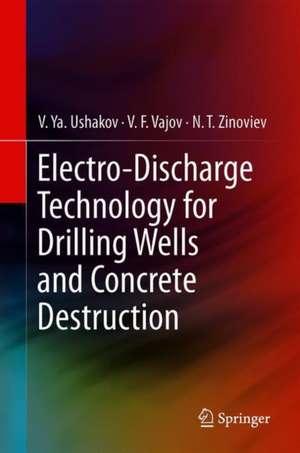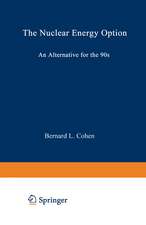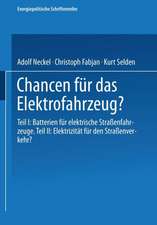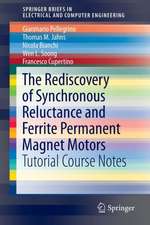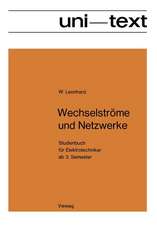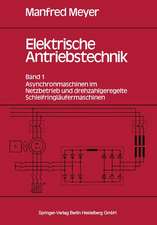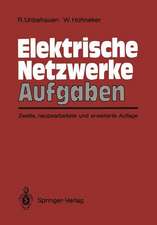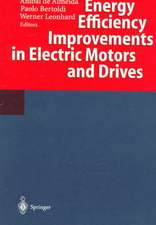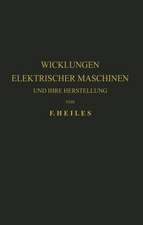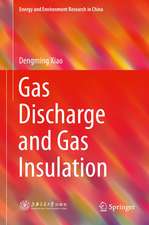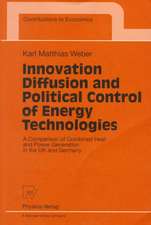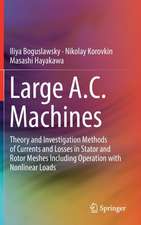Electro-discharge Technology for Drilling Wells and Concrete Destruction
Autor V. Ya. Ushakov, V. F. Vajov, N. T. Zinovieven Limba Engleză Hardback – 10 dec 2018
The book is intended for all scientists and experts working in the field of resource exploration and extraction, those engaged in building new objects, and in reconstructing or demolishing old ones. It can also be used as a textbook by students and postgraduates, deepening their knowledge of these innovative technologies.
Preț: 645.79 lei
Preț vechi: 759.76 lei
-15% Nou
Puncte Express: 969
Preț estimativ în valută:
123.57€ • 129.02$ • 102.27£
123.57€ • 129.02$ • 102.27£
Carte tipărită la comandă
Livrare economică 04-18 aprilie
Preluare comenzi: 021 569.72.76
Specificații
ISBN-13: 9783030045906
ISBN-10: 3030045900
Pagini: 290
Ilustrații: XV, 261 p. 151 illus., 32 illus. in color.
Dimensiuni: 155 x 235 mm
Greutate: 0.57 kg
Ediția:1st ed. 2019
Editura: Springer International Publishing
Colecția Springer
Locul publicării:Cham, Switzerland
ISBN-10: 3030045900
Pagini: 290
Ilustrații: XV, 261 p. 151 illus., 32 illus. in color.
Dimensiuni: 155 x 235 mm
Greutate: 0.57 kg
Ediția:1st ed. 2019
Editura: Springer International Publishing
Colecția Springer
Locul publicării:Cham, Switzerland
Cuprins
Relevance, physical basis, and problems of large-scale introduction of electro-discharge technology (EDT).- Impulse electrical strength of rocks and concretes.- Liquids used as insulation and a working medium in EDT.- Discharge channel as a “working tool” in EDT.- Regularities of rock destruction in the process of ED-drilling of wells.- Insulating structure in EDT installations.- Drilling of wells.- Destruction and recycling of reinforced concrete products.- Fragmentation of the filler – the final stage of preparation of reinforced concrete products for utilization.- Breaking and cutting of rocks and concretes.
Notă biografică
Associate Professor Vladislav F. Vajov graduated from the Tomsk Polytechnic Institute (now the Tomsk Polytechnic University (TPU)) in 1963. He subsequently received his Ph.D. and Doctor of Science degree from the same university in 1974 and 2015, respectively. His doctoral dissertation explored the technological fundamentals of electric impulse drilling and cutting of rocks. Since 1963, he has worked at the High Voltage Research Institute (now the Engineering School of New Production Technologies). Having participated in virtually all field tests of electro-discharge drilling installations over the years, he is also the author of more than 100 scientific publications and holds 29 certificates and patents.
Professor Vasily Ya. Ushakov graduated from Tomsk Polytechnic University (TPU) in 1962, and received his Ph.D. and Doctor of Science degree from the same university in 1965 and 1973, respectively. Ushakov is a well-known expert on high-voltage engineering, particularlyin the area of electric breakdown of condensed media, insulation of pulsed power equipment, and electro-discharge technology. He has published over 250 scientific articles, 25 monographs and textbooks, and holds 38 invention certificates and patents. From 1974 to 1981, he was head of the high-voltage department; from 1979 to 1992 he was Director of the High-Voltage Research Institute; and from 1992 to 2001 he was the Vice-Rector for Research (all at the TPU). Since 2001, he has led the TPU’s Resources Saving Centre.
Candidate of Technical Sciences Nikolai T. Zinoviev graduated from the TPU in 1973 and received his Ph.D. degree in 1980. The topic of his thesis was “Investigation of the energy characteristics of the spark channel in order to optimize the devices of electro-pulse technology.” In subsequent years, he continued to work on the same problem as a senior research fellow and head of the laboratory “Physics of Electro-Impulse Processes” at the Engineering School of New Production Technologies (1984–2010). Under his leadership, full-scale installations for the demolition of sub-standard reinforced concrete products were manufactured, tested and supplied to Russian and foreign customers (Kazakhstan – 1992, Japan – 1995, Germany – 1997, and Armenia – 1998). He has published one monograph and 20 scientific articles on this topic, and holds more than 30 certificates and patents.
Professor Vasily Ya. Ushakov graduated from Tomsk Polytechnic University (TPU) in 1962, and received his Ph.D. and Doctor of Science degree from the same university in 1965 and 1973, respectively. Ushakov is a well-known expert on high-voltage engineering, particularlyin the area of electric breakdown of condensed media, insulation of pulsed power equipment, and electro-discharge technology. He has published over 250 scientific articles, 25 monographs and textbooks, and holds 38 invention certificates and patents. From 1974 to 1981, he was head of the high-voltage department; from 1979 to 1992 he was Director of the High-Voltage Research Institute; and from 1992 to 2001 he was the Vice-Rector for Research (all at the TPU). Since 2001, he has led the TPU’s Resources Saving Centre.
Candidate of Technical Sciences Nikolai T. Zinoviev graduated from the TPU in 1973 and received his Ph.D. degree in 1980. The topic of his thesis was “Investigation of the energy characteristics of the spark channel in order to optimize the devices of electro-pulse technology.” In subsequent years, he continued to work on the same problem as a senior research fellow and head of the laboratory “Physics of Electro-Impulse Processes” at the Engineering School of New Production Technologies (1984–2010). Under his leadership, full-scale installations for the demolition of sub-standard reinforced concrete products were manufactured, tested and supplied to Russian and foreign customers (Kazakhstan – 1992, Japan – 1995, Germany – 1997, and Armenia – 1998). He has published one monograph and 20 scientific articles on this topic, and holds more than 30 certificates and patents.
Textul de pe ultima copertă
This book provides a concise introduction to the physical foundations of the electro-discharge technology and applies it to the drilling of wells, the demolition of reinforced concrete objects, and the cutting of cracks in rocks and concrete. The electro-physical basis of this technology and the technical implementation of using spark discharge as a “working tool” in the above-mentioned contexts are also briefly considered.
The book is intended for all scientists and experts working in the field of resource exploration and extraction, those engaged in building new objects, and in reconstructing or demolishing old ones. It can also be used as a textbook by students and postgraduates, deepening their knowledge of these innovative technologies.
The book is intended for all scientists and experts working in the field of resource exploration and extraction, those engaged in building new objects, and in reconstructing or demolishing old ones. It can also be used as a textbook by students and postgraduates, deepening their knowledge of these innovative technologies.
Caracteristici
Explains the drilling of wells, the demolition of reinforced concrete objects, and the cutting of cracks in rocks and concrete using electro-discharge technology Provides a concise introduction to the physical foundations of electro-discharge technology Examines the use of spark discharges as a “working tool” for rocks and concrete
